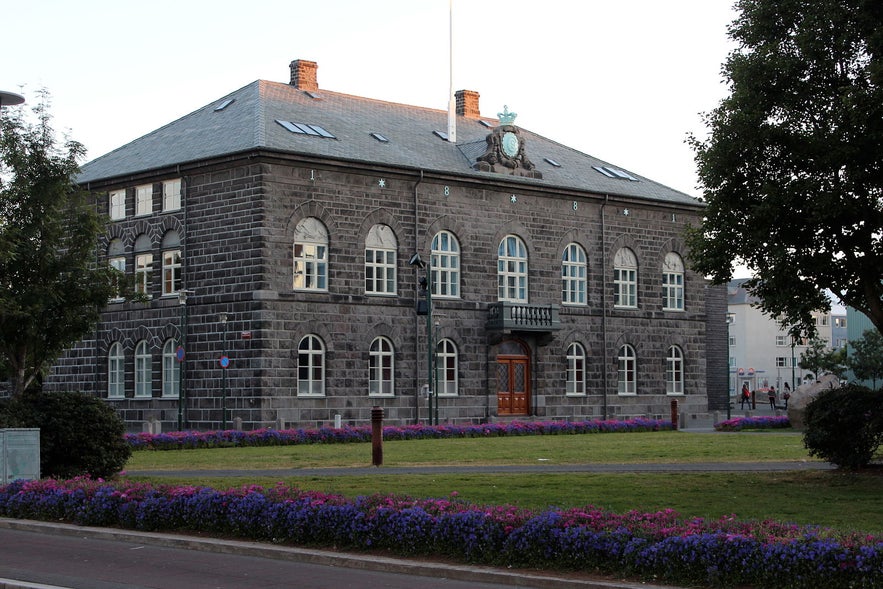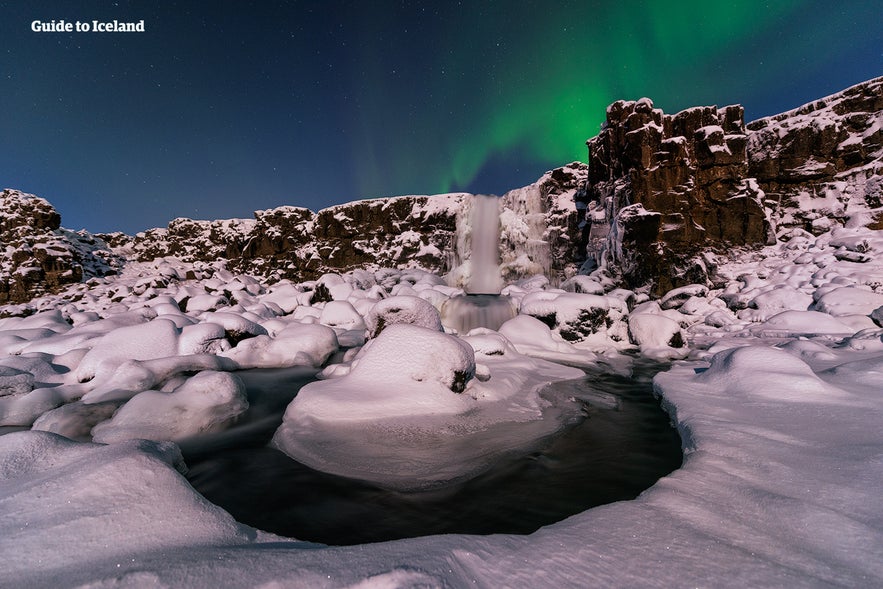
The Alþingi is Iceland’s parliament, and the longest-running ongoing representative assembly in the world. It is located in Reykjavík.
Photo from Wikimedia, Creative Commons, by Zinneke. No edits made.
Waarom u onze inhoud kunt vertrouwen
Guide to Iceland is het meest vertrouwde reisplatform in IJsland en helpt ieder jaar miljoenen bezoekers. Al onze content wordt geschreven en gecontroleerd door lokale experts die IJsland door en door kennen. U kunt op ons rekenen voor nauwkeurig, actueel en betrouwbaar reisadvies.
History
The Alþingi was formed in 930 AD, originally in Þingvellir National Park (now a UNESCO World Heritage Site and National Park for this fact, found on the Golden Circle). Its creation marked the end of the Settlement Era, and began the Commonwealth Era.
The Alþingi came to be when the 32 clans of settlers, who’d been arriving to Iceland since 874 AD and forming regional assemblies of their own, decided they would rather talk out their issues than fight over them.
Of course, as descendents of Vikings, a lot of fighting was still done when the parliament convened every year, as is recounted in many sagas, but usually, the parliament worked. Icelanders from around the country would come to learn what was happening elsewhere, promote the establishment of new laws, and settle disputes.
In many ways, this was an incredibly forward thinking institution for its time; it sought to keep power local, settled blood-feuds diplomatically, and even granted divorces to women who were unhappy in their marriages. In other ways, it was less so; witches, for example, were regularly tried and convicted at the Alþingi.
There was no ‘leader’, per se, but a Lawspeaker, who would record and read out the commonwealth’s rules from ‘the Law Rock’. One of these Lawspeakers, Snorri Sturluson, is regarded as one of the world’s most important medieval historians, but what is less known is that his tenure was embroiled in civil war, and led to the end of the Commonwealth Era as Iceland was absorbed into the Norwegian Empire.

The Alþing was still an important institution in the country, as the Norwegian kings cared little for the personal disputes of Icelanders, and ran for centuries unchanged. However, when the Kalmar Union collapsed and Denmark took over Iceland’s management, more and more power was taken from the locals.
In 1800, the Alþingi was temporarily dissolved by the Danish king, and replaced by a High Court in Reykjavík. However, a second royal decree reestablished it in 1843, although it too was now in Iceland’s capital.
Since then, the Alþingi has modernised with the times. Enfranchisement grew to incorporate everyone, regardless of income and gender, and eventually, first by achieving Home Rule then Independence, the shackles of Danish Rule were thrown off.
Alþingi Today
The Alþingi today can be found in downtown Reykjavík, next to the city’s cathedral (not to be confused with the much larger Hallgrímskirkja church). It is often photographed as the backdrop to protests, as Icelanders are a very politically active people. Most notable were the 1975 Women’s Day Off Protests and the 2007 Kitchenware Revolution, as well as the response to the Panama Papers in 2016.
Þingvellir is still visited on Golden Circle tours, where guests can learn all about this history while marvelling over beautiful nature and the edges of the tectonic plates. There are no buildings remaining (Icelanders would simply camp here while the parliament convened), but a few crumbling old walls, some submerged in water, reveal a little of what once went on here.









